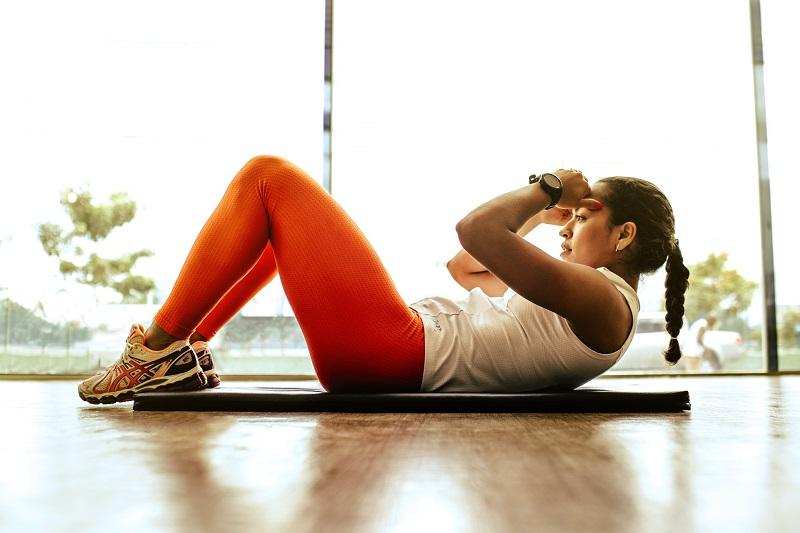Back pain can be a real drag. It affects our daily routines, makes simple tasks harder, and is just a complete nuisance. But, with the right lower back stretches, you can bid that nagging pain goodbye. Here we present you the Best Lower Back Stretches.
Why Stretch Your Lower Back?
Stretching is not only for those who engage in sports. When it comes to the lower back, incorporating simple stretches can:
- Improve flexibility.
- Reduce tightness.
- Decrease the chances of injuries.
- Alleviate existing pain.
What is Stretching
Before we explain the different stretches, it's essential to know the correct way to stretch. Stretching should never cause pain. It's about feeling a gentle pull in your muscles. If something hurts, stop immediately. Always consult a physician or a physiotherapist if you're unsure about the stretches, especially if you have an existing back problem.
The Best Lower Back Stretches
Child’s Pose
How to do it:
Start by kneeling on the ground.
- Reach your arms out in front of you while sitting back on your heels.
- Keep your head down and try to touch the ground with your forehead.
- Feel the stretch in your lower back and hold for 20-30 seconds.
Pelvic Tilt
How to do it:
- Lie down on your back, knees bent.
- Flatten your back against the floor by tightening your abdominal muscles.
- Hold for 5 seconds, then relax. Repeat this 10 times.
Knee to Chest Stretch
How to do it:
- Begin by lying on your back, knees bent.
- Hold one knee and pull it up towards your chest.
- Hold for 20-30 seconds, then switch to the other knee.
Cat-Cow Stretch
How to do it:
- Start on your hands and knees.
- Arch your back towards the ceiling (like a cat) and then dip it towards the ground (like a cow).
- Move slowly between these positions for about 1 minute.
Seated Spinal Twist
How to do it:
- Sit on the ground with your legs straight.
- Bend your right knee and place the foot over the left knee.
- Twist your upper body towards the right.
- Hold for 20-30 seconds, then switch sides.
Tips for Maintaining a Healthy Lower Back

Your lower back does a lot of heavy lifting – figuratively and literally. To ensure it remains in good shape, it's vital to adopt some preventive habits alongside your best lower back stretches routine.
Maintain a healthy weight
Carrying excess weight, especially around your midsection, can strain the lower back. By keeping within a healthy weight range, you reduce unnecessary stress on your back muscles.
Mind your posture
Whether you're sitting, standing, or moving around, good posture is a must. Remember to avoid slouching and to keep your back in a neutral position.
Use ergonomic furniture
Invest in chairs and desks designed to support your spine. It's particularly important if you spend a lot of time sitting each day.
Strengthen your core
Your abdominal muscles play a vital role in supporting your lower back. Incorporating core exercises, like planks and bridges, into your routine can be a game-changer.
Lift correctly
Always use your knees and hips, not your back, when lifting something heavy. Keep the object close to your body and avoid twisting your torso.
Benefits of Daily Lower Back Stretch
When done regularly, a simple lower back stretch can:
- Improve posture: Stretching helps realign your spine, promoting a better stance.
- Decrease stress: Physical pain often brings emotional stress. Alleviating back pain can improve overall well-being.
- Enhance physical performance: A flexible lower back can aid in overall body function and movement.
FAQs: Lower Back Stretches and Pain Relief
Why is it important to stretch the lower back?
Stretching the lower back can help relieve tightness and discomfort. It improves flexibility, reduces muscle tension, and can help in preventing injuries. Plus, regular stretching promotes blood flow, helping muscles recover faster.
How often should I do these lower back stretches?
Ideally, you should incorporate these stretches into your daily routine, especially if you spend a lot of time sitting. However, even stretching 3-4 times a week can make a noticeable difference.
I've just started stretching, and I feel more pain. Is this normal?
While some discomfort is expected when you begin a new routine, sharp or severe pain is not. It's important to differentiate between a slight stretch and pain. If you experience increased pain, stop the stretch and consult a medical professional.
Can lower back stretches cure my chronic back pain?
While these stretches can significantly help alleviate discomfort and enhance flexibility, they might not "cure" chronic conditions. It's always best to seek guidance from a healthcare professional for chronic issues.
Are there any precautions to consider before starting these stretches?
Always start slowly, especially if you're new to stretching. If you have a pre-existing condition or injury, consult with a doctor or physiotherapist before beginning any new exercise or stretch.






